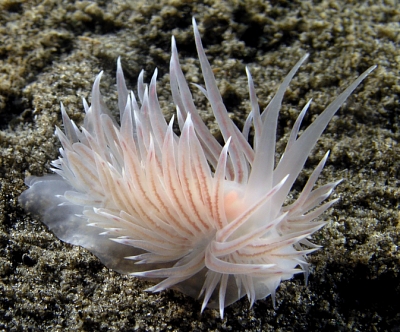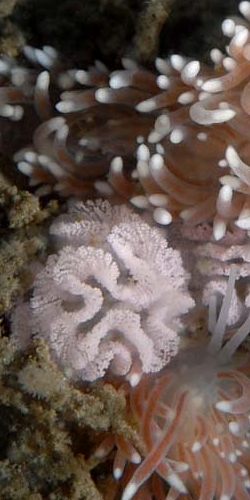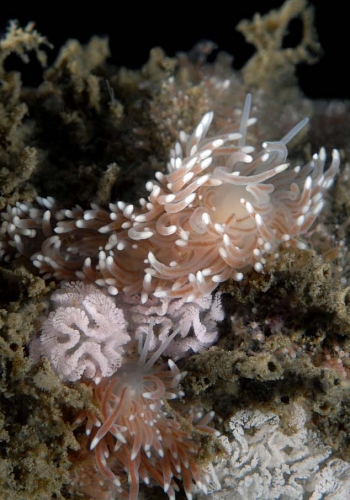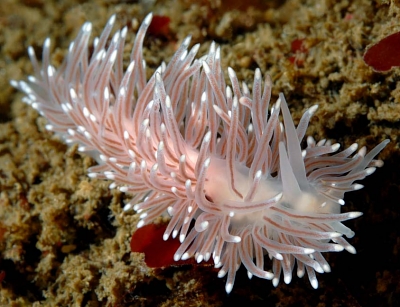Cumanotus vs Cuthona divae
August 24, 2007
From: Kevin Lee

Hi Doc,
A few days ago, Terry Strait photographed Cumanotus sp., down in La Jolla Shores. On looking at his slug, it looked very similar to one I saw there last year, but thought it was Cuthona divae. Also, on reading Jeff Goddard's message #14582 and seeing Terry's entry #14560, I'm more convinced that my slug is indeed Cumanotus sp. Confirmation would be appreciated. I attach both animals for comparison.
Upper Photo: Cumanotus sp. La Jolla Shores, California; 65 fsw; Sandy bottom. Length: 4cm.09 Sep 2006. Middle: Cuthona divae. Redondo Canyon, California; 90f sw; 02 Aug 2007. Lower: Cuthona divae. Pt. Loma, San Diego, California; 75 fsw; 27 May 2007. Photographer: Kevin Lee.
Cheers,
K:-)
diverkevin@gmail.com



Hi Kevin,
You are absolutely correct with both ID's. Seems that our undescribed Cumanotus is having a population explosion in your area as I have received dozens of e-mails asking me if these are large Cuthona divae. Lets see if I can explain the obvious, external differences in these two aeolids.
To begin with the ceratal cores in this species of Cumanotus are spiraled and branched, while the cores in Cuthona divae are thin, smooth and straight tubes, as seen in your photo to the right. Secondly, the rhinophores of this Cumanotus are fused at the base (the photo on page 110, of Eastern Pacific Nudibranchs shows this well). Those in Cuthona are not. Lastly, the foot of this species of Cumanotus is quite wide, extending as wide as the spread of the lateral cerata. In Cuthona divae we can rarely see the foot as it does not extend laterally from the body.Several of the photos sent me in the last week show this species burrowing into the sediment, suggesting it might feed on worms or some other prey living buried. Most Cuthona prey on hydroids. We need more observations from you folks in Southern California to confirm this.
A note from Bill points out to me -- the egg mass in your photo is nearly identical to one submitted by Jackie Hildering [#20138, #20145 ]
Not sure this proves her eggs are Cuthona divae, but it supports my suggestion that she had more eggs from more than one species.Thanks for submitting these. Good stuff,
Dave Behrens
Related messages
-
Cumanotus sp.1 from Washington (Nth Pacific)
From: Jan Kocian, January 18, 2006 -
Cuthona divae from California
From: Terry Strait, August 17, 2005 -
Re: Cuthona divae from California
From: Jeff Goddard, August 17, 2005
